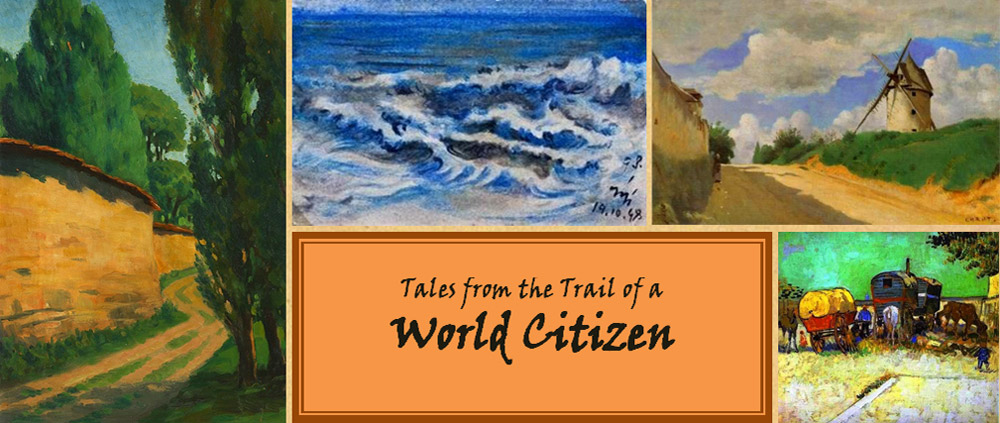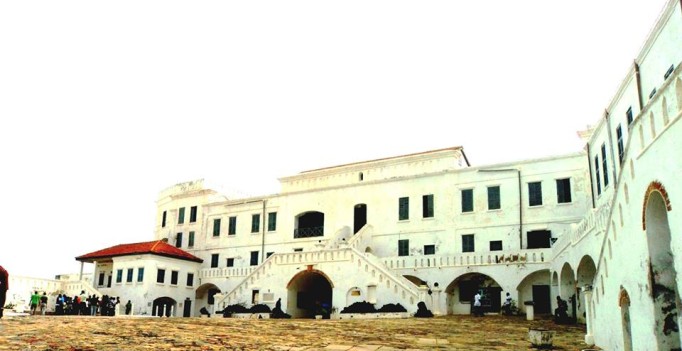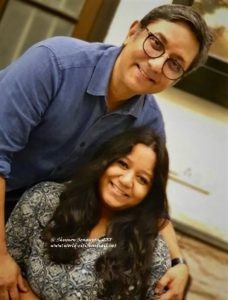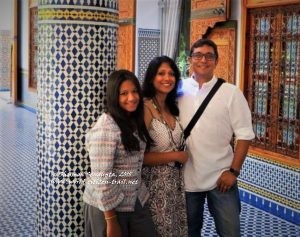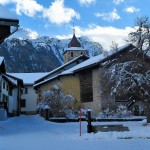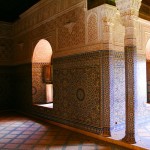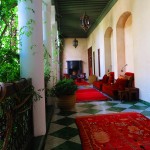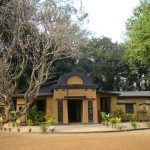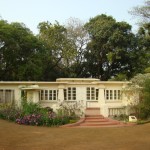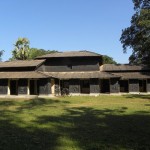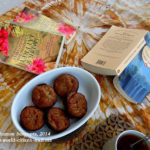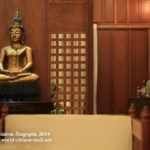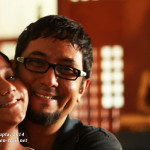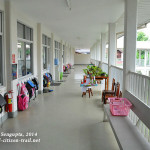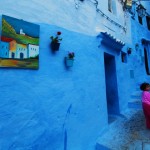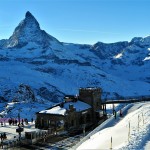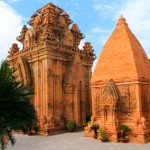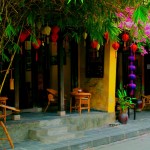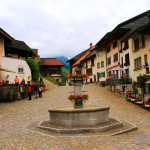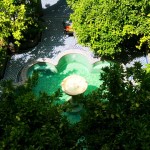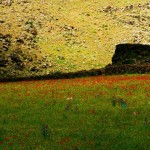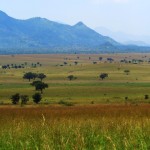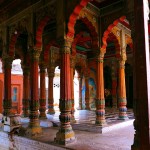The strategic location of Cape Coast in Ghana made it a lucrative spot for a permanent presence of European imperial powers from the mid 16th century. It was an ideal location for the extraction and export of gold, ivory, timber and slaves from Africa into the New World of the Americas, the Caribbean Islands and Europe. Different parts of the region therefore came to be referred to, at different points in time, by different names – Cape Coast, Gold Coast (the old name of Ghana), Ivory Coast (presently Cote d’ Ivorie) and Slave Coast. Eventually, the most lucrative commodity of trade changed from gold to slaves, who came from many parts of West Africa.
In the previous episode, I had briefly described my journey to the Cape Coast area in the central region of Ghana – a stretch along the Atlantic Ocean in West Africa which is dotted with castles and forts built by various European powers between the 16th and 19th century. In this episode, I will take you inside one of these castles – the famous Cape Coast Castle, now a UNESCO World Heritage Site. However before I do that, some background of the Castle would be in order.
The Portuguese were the first to leave their footprint in this region and built the very first trade lodge in Cape Coast in 1555, around the time of Akbar the Great in India. The Swedes followed suit and built a permanent fort in Cape Coast in 1653, naming it Carolusburg after King Charles X of Sweden. During the next eleven years, the Danes, the local tribal Fetu Chief and the Dutch, each in succession captured and held the fort for brief periods. And finally, the English took the fort in 1665, expanded it and eventually converted into a full-fledged castle. The history of this castle, in many ways defines the history of the city of Cape Coast and it is one of Ghana’s most important tourist attractions.
The Castle, as we see it today, is over 300 years old. The occupants of the castle during its heydays included the governor, chaplain and treasurer, medical officer, warehouse keepers, accountants, auditors, regular soldiers and ad hoc recruits. The rest were clerical or mercantile staff and some skilled workmen. Added to this were about one thousand male and three hundred female West African captive slaves. The castle had its barracks on its western spur and at any point in time there would be approximately 120 British soldiers.
European traders and colonizers did not travel to the hinterlands to capture slaves themselves; instead, they depended almost entirely upon middlemen who were mostly local Africans from the coast, to do this job for them. The middlemen, who were the slave raiders with guns and on horseback, bribed, coerced and threatened local chiefs and bought the slaves. Among the slaves sold by the Tribal chiefs to the middlemen were men, women and children from rival tribes, enslaved after victories in intertribal wars. The captors therefore often were from neighboring tribal kingdoms such as Ivory Coast, Burka Faso, Togo, Mali, Benin and Niger. In addition, captors also included debtors and other people from within the tribe, accused of various crimes and wrong-doings, who the tribal chiefs wanted out of their chiefdoms.
Once made captives by the slave raiders, the slaves were then forced to march down in large numbers from the hinterlands to the coast, travelling through forests and bush paths and often wading through rivers and swamps. They were tied up with ropes and often chained to each other to prevent their escape. They walked very slowly in a single file from sunrise to sunset for days, without much food or water, women often walking with their babies on their backs. By the time the captives arrived at the castle, many had died on the way due to thirst, hunger, fatigue, disease and shock. On arrival at the castle, they were allowed to bathe and thoroughly clean themselves. They were then groomed – smeared with Shea Butter to look strong, healthy and gleaming, for auction to their potential buyers.
From this point forward, from the entrance of the castle, I followed the footsteps of the captive slaves through the castle, almost exactly as they did over 200 years back.
After passing through the main entrance to the castle, I found myself on a sprawling courtyard overlooking the Atlantic Ocean. In terms of its architectural features, the Cape Coast castle has an irregular polygonal plan and is built of local quarried sandstone, while the door and window openings and vaults have brick dressings. It has a large pentagonal courtyard overlooking the Atlantic Ocean. The five corners of the pentagonal courtyard have polygonal bastions. Three sides – one long and two short sides face the ocean and the two landward sides are enclosed by three-storey buildings. A mixture of lime and mortar was used as cement – something that has stood the test of time well.
As I walked my way through, I went past a plaque dedicated to the memory of the victims of the slave trade. From the courtyard, I climbed two floors to reach the ‘Palaver’ – the large ‘Bargaining Hall’ on the second floor in the central wing, where the slaves were sold or auctioned. As I entered the Palaver, it took me little imagination to travel back into history. I could visualize the slaves – men, women and children in chains, gleaming in Shea Butter, almost naked and broken in spirit, being examined from head to toe like cattle. I even visualized sellers and the buyers haggling to settle the price of the slave or the buyers out-bidding each other to arrive at the price of the human commodity.
From the Palaver the slaves, after they were sold, were branded on their chest, arms or back with hot iron dripping in oil, for the purpose of their identification with their new master. As I entered the branding room, I almost felt that I could smell the combination of coal fire, hot oil and fumes of the burning flesh and hear the horrific cries of the slaves, as their skin and flesh seared at the touch of the red hot branding irons. After the branding, the slaves were sent in shackles to the dungeons below for a period that would range from a month to three months, to wait for the ship to take them across the Atlantic. From then on it was an unimaginable living hell for the slaves.
From the branding room I then proceeded to the male dungeon at the basement. The tunnel that led from the courtyard to the dungeon sloped gently, then curved and twisted before leading to four dark, dingy and airless underground chambers. At any point in time around 1000 slaves were held, packed in the airless chambers, awaiting their shipment to the New World. There were no toilets and the captors had to relive themselves on the trenches along the four walls of their dungeon chambers. The trenches which served as a primitive sewerage system were barely cleaned and for months the captive slaves lived amidst their own filth and waste. Although the chambers have since long been cleaned, as I entered the first chamber, I was overwhelmed by a sense of claustrophobia and the suffocating smell of the still and musty air. Images of the brutality of the daily lives of the slaves who lived in filth and decay flashed in front of me.
Ironically, the first English Church in Ghana (Society for the Propagation of the Gospel) was built right on top of the male dungeon and it made me wonder how ‘the faithful’ could aspire to commune with the divine while turning a completely deaf ear to the anguished cries of the slaves in the dungeons below the floor of the church.
A long, deep and dark tunnel, now long sealed, led from the male dungeons underneath the castle’s courtyard along the seaside to reach a common passage. In this common passage, female slaves arriving separately from the adjoining female dungeons joined the male slaves, before being led in a single file through a narrow door – now called the “Door of No Return” to the waiting ships. Since the tunnel is now sealed, I walked over the tunnel’s roof along the curtain walls, past the series of canons pointing to the sea. This eventually led me to the dungeons where approximately 300 women and children were, at any point in time, held captive in two small airless chambers. The chambers in the women’s dungeons were almost as bad as that those for men, with minimal ventilation and almost non-existent sanitation. From there I walked to the common passage and the narrow exit point – the “Door of No Return” at the end of the passage.
The “Door of No Return” was where the captive slaves, chained one behind the other, made their slow and final exit from the African continent to destinations unknown in the New World. From the narrow exit, the slaves boarded canoes, which took them to waiting slave ships further ahead, never to return to their land and homes. Many perished during the voyage and never reached the other shores.
The door opens to the serene vastness of the deep blue Atlantic Ocean – in dramatic contrast to the dark and claustrophobic tunnel on the other side of the door. The beach beyond this area is now the site of a congested fishing village, packed with canoes, boats and fishing nets and wooden shacks, interspersed with brick and stone buildings from the colonial times, long past their prime.
As I retraced the footsteps of the slaves, I felt almost as if my own spirit was broken. Again I did not have to use much imagination as I slowly made my way through the tunnels and dungeons to visualize the life of the captive slaves; to even partially comprehend the horrors of slavery – of the unimaginable hell they went through. As a person who takes his freedom for granted, standing beyond the door of no return, I was grimly reminded of the extent of injustice human beings are cable of doing to one another.
From there I turned back, retraced my steps through the courtyard and leading up a wooden staircase, arrived at Governor’s residence on second floor of the central wing of the castle. The Governor’s residence, a veritable haven comprised a sprawling reception, a hall, a big bedroom overlooking the ocean, a balcony, communication rooms and sentry posts. On the upper floors lived in luxury and grandeur the slave masters. In the dungeons below languished thousands of captured slaves surviving through untold misery and agony. The contrast couldn’t have been more dramatic I thought.
It was also in this castle that in 1760s, the first formal and modern school was opened, with the aim of educating the children of African women from European men. Another massive hall on the second floor of the central wing served as the first Court of Justice in West Africa, set up by the British in the 1830s, by which time slavery was legally abolished in Great Britain. The site of first Court of Justice in West Africa had in its past served as the seat of the highest form of human injustice – such was the twist in the history of the castle.
At the end of the tour, I felt emotionally drained and deeply disturbed. As I climbed down the stairs and walked out through the courtyard I came across a noisy group of curious, bright eyed children in purple and white school uniform on an educational tour of the castle. My spirits lifted – I felt a sense of hope. Children always did that to me. I walked out of the place, past the slave cells and I stopped by the plaque once again. It read:
“In the everlasting memory of the anguish of our ancestors: May those who died rest in peace; May those who return find their roots; May humanity never ever perpetrate such injustice against humanity”.
“We the living vow to uphold this”.
As I collected my thoughts, I was caught in a sudden gust of ocean breeze. I could hear the crash of the waves and at a distance I could see the cluster of coconut palms sway vigorously. The ocean breeze had picked up and begun to sweep over the castle. And the winds also swept away the despair and melancholy and lifted the time wrap I was in, as if by magic.
The place no longer reverberated with the incessant clank of the chains and the clatter of the shackles, or with the lashing of the whips. The balmy smell of the ocean winds did not betray any smell of decay, disease and death; or of human flesh, blood and waste from the past. Nor did the air ring with the sufferings and anguished cries of the captive slaves. Everything had slipped back into their place in history. What I heard instead was the excited and curious voice of children, their impatient footsteps and the sounds of the blowing winds. I was reminded of the vow.
(to be concluded)
